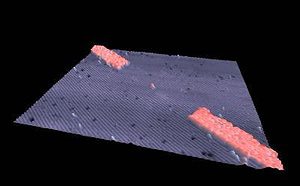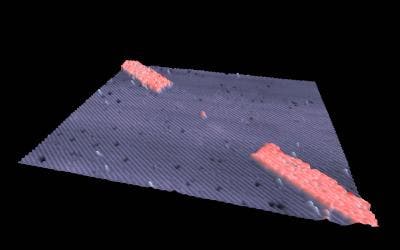
Australian scientists at University of New South Wales have successfully managed to build the first single-atom transistor, using a scalable, repeatable technique. The scientific community all over the world have already hailed this achievement as a highly important milestone, as single-atom transistors are considered as a critical building block for the eventual development of quantum computers.
The tiny device was created using a scanning-tunneling microscope (STM), which allowed the team of researchers, who have been working on this project for ten years, to manipulate hydrogen atoms around a phosphorus atom with extreme precision onto a silicon wafer – all in ultra-high vacuum conditions. The microscopic device was even fitted with tiny visible markers etched onto its surface so researchers can connect metal contacts and apply a voltage. The end result is a single-atom transistor, which puts quantum computing systems a step closer to becoming reality.
“Our group has proved that it is really possible to position one phosphorus atom in a silicon environment – exactly as we need it – with near-atomic precision, and at the same time register gates,” Dr Martin Fuechsle from UNSW says.
Single-atom transistors have been created before, the first demonstration dating from as early as 2002, however the development method could have only been described as hit or miss – resulting devices were made only by chance. This latest technique developed by the UNSW scientists can produce single-atom transistors with very high precision and reliability. Also, their technique respects the current industry-standard for building circuitry.
“But this device is perfect”, says Professor Michelle Simmons, group leader and director of the ARC Centre for Quantum Computation and Communication at UNSW. “This is the first time anyone has shown control of a single atom in a substrate with this level of precise accuracy.”
Considering Moore’s Law, which states that the number of transistors inside a circuit should double every 18 months, it is predicted that transistors will reach the single-atom level (the ultimate limit) by 2020. Currently, the smallest dimension in state-of-the-art computers made by Intel is 22 nanometers — less than 100 atoms in diameter.
Using a similar technique, Intel engineers recently managed to create a magnetic storage device using an array composed of a mere 12 atoms.









